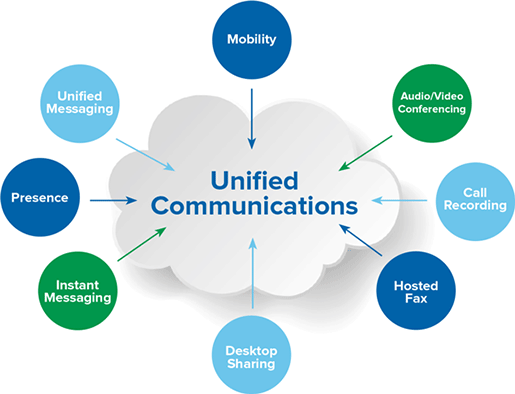How Unified Communications and Collaboration Tools Benefit Workers
2 min read
Unified communications solutions are based on the concept that all communications functions inside a business unit are unified to operate seamlessly on a single platform. However, the true benefits of unified communications and collaboration are only recently really being recognized thanks largely in part to advances in mobility.

As workforce dynamics change and workers become more remote, desiring to work from different locations and be reachable from a number of devices, unified communications and the services provided by unified communications providers have advanced in order to keep up with demands.
Workers have become increasingly mobile and have a need to collaborate in real-time from a number of different devices, in a number of different locations.
This means that communications platforms were required to advance into unified solutions that were more personal in nature in order to meet the needs of the newer workforce.
Some of the greatest benefits of unified communications solutions for workers include:
- Easier collaboration: a mobile workforce demands (and very much needs) the ability to connect with anyone the need to, all the while still being capable of accessing information from the company database. However, many communications systems rely on multiple systems for a single collaboration session. In a truly unified environment, mobile workers can access the same systems and tools and collaborate with team members outside of the corporate systems through an easy to use web plugin or portal.
- Greater and more efficient access to information: The majority of legacy-based phone systems are inordinately latent, due mostly in part to human inability. System users were less efficient simply because data was housed over multiple systems. With a unified system, all data, content and relevant applications are stored on a single system, with one entry point.
- Better access and utilization of collaborative tools and applications: Since a unified communications system is designed to combine pervasive access with easy usability, employees are much more likely to leverage various applications and tools throughout the course of their employment duties.
Creating a true unified communications solution should be a primary objective for most businesses in 2016. Especially for those looking to arm their workforce with the tools they need to collaborate and work smarter.





